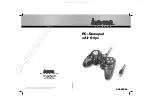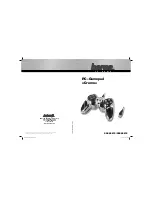
Manual, Passive Compliant Force Control
Document #9610-50-1036-04
Pinnacle Park • 1031 Goodworth Drive • Apex, NC 27539 USA • Tel: +1.919.772.0115 • Fax: +1.919.772.8259 • www.ati‑ia.com
9
2.3 Compliance Unit Performance
The force created by the compliance mechanism varies linearly with air pressure as shown in
This does not account for friction or the weight of the carriage and attached tooling. Measurements may
vary from one product to another and should only be treated as nominal. The effect of friction will vary
based on the application, and a minimum compliance force is required to overcome the friction and allow
the compliance mechanism to move properly. This minimum force is typically 2‑4 lbf, but it may be higher
or lower based on a variety of factors.
Figure 2.2—Compliance Force
0
10
20
30
40
50
60
0
10
20
30
40
50
60
Operating Pressure (PSI)
Co
mp
lianc
e
Fo
rc
e
(l
bf
)
Piston A C
onfiguration
onfiguration
onfiguration
Piston B C
Piston C C
PCFC Pressure vs. Compliance Force
If using the Gravity Compensation functionality of the PCFC, refer to section
for instructions on how to select the correct pressure for your desired compliance force. If
not using Gravity Compensation, refer to
and factor in the weight of the attached tooling plus
an additional 2.2 pounds for the carriage inside the PCFC. If the PCFC is pointed upward, this weight will
reduce the net compliance force, requiring a higher operating pressure to achieve the desired compliance
force. If the PCFC is pointed downward, it will increase the net compliance force, requiring a lower
operating pressure (or a higher pressure applied to the retract compliance fitting) to achieve the desired
compliance force.










































